サッポロも「糖質ゼロ」に参入 発泡酒発売へ
2008年02月22日
サッポロビールは糖質ゼロ発泡酒の「ビバライフ」を4月16日から全国で売り出す。発酵技術を駆使し、アルコール以外のカロリーをほぼゼロにした。健康 志向の高まりで需要が見込め、他大手もすでに製品化を発表している分野だ。ビバライフはアルコール度数が5%と他社製品より高めで、「飲みごたえ」が特徴 という。年内に300万ケース(1ケースは大瓶20本換算)の販売が目標だ。
 |
サッポロ・ビバライフ |
2012年8月末我將此BLOG 改名;2017.11.1 改名
Italy And Wine specializes in wine tours in Tuscany and Veneto regions. It gives you the opportunity to customize your day in the wine country  according to your taste and budget. For the curious type wanting to know a bit of viticulture and the wine making process, or the novice wanting to learn how to taste and appreciate quality wines, Italy And Wine will provide a tour which will be entertaining, informative and fun.
according to your taste and budget. For the curious type wanting to know a bit of viticulture and the wine making process, or the novice wanting to learn how to taste and appreciate quality wines, Italy And Wine will provide a tour which will be entertaining, informative and fun.
Italy And Wine was formed in 2004 as a result of a long term love of Italy, his wines, food and way of life. It all started in the 1990s when I was studying as a Sommelier and working in a Travel Agency in Florence says Mr. Vittorio. We have designed a variety of itineraries in the two major wine areas of Italy such as Tuscany and Veneto. All these itineraries can now be customized to suit individual and group requirements and budgets.
Mr Vittorio De Buono
Italy And Wine - founder
 Chianti Classico wine tour
Chianti Classico wine tour  Castles of Chianti wine tour
Castles of Chianti wine tour Florence wine tour
Florence wine tour Montalcino wine tour
Montalcino wine tour Montepulciano wine tour
Montepulciano wine tour San Gimignano wine tour
San Gimignano wine tour Valpolicella wine tour
Valpolicella wine tour Venice wine tasting
Venice wine tasting Barolo wine tour
Barolo wine tour n.
n.[German, alteration of obsolete Rüssling.]
[REEZ-ling; REES-ling] Riesling is considered one of the world's great white wine grapes and produces some of the very best white wines. It's a native of Germany, where it's believed to have been cultivated for at least 500-and possibly as long as 2,000-years. Riesling wines are delicate but complex, and characterized by a spicy, fruity flavor, flower-scented bouquet and long finish. Riesling is vinified in a variety of styles ranging from dry to very sweet. In Germany, these sweet wines-which are usually affected by botrytis cinerea- are graded in ascending order of sweetness as auslese, beerenauslese and trockenbeerenauslese. California winemakers now produce high-quality, German-style Rieslings, which are lighter, more delicate, and slightly to medium-sweet. Because the name "Riesling" is used in many ways, it's sometimes difficult to find wines truly made from this variety. In California, for instance, Johannisberg Riesling is the true Riesling, whereas Gray Riesling and Emerald Riesling are actually other varieties. A bottle of California wine labeled simply "Riesling" usually means that the wine's made from one of the lesser varieties, not Johannisberg Riesling.
正宗
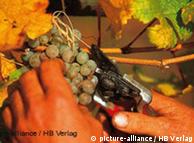 Bildunterschrift: 修剪
Bildunterschrift: 修剪
摩塞尔河流域是德国最历史最悠久的葡萄和葡萄酒产地。罗马人当时就已经明白,莱茵河左侧的片岩丘陵地带特别肥沃的土地给葡萄种植提供了最佳的地理和气候前提。这个地区是德国气候最温暖的地区之一,这里,直到深秋,仍是阳光灿烂,冬天也几乎没有霜冻。年均气温在摄氏10度。
雷司令的理想生存前提
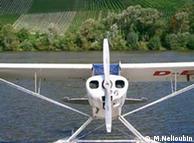 Bildunterschrift: 酒地Wintrich
Bildunterschrift: 酒地Wintrich
摩塞尔河流域有约9000公顷种植面积, 5000名葡萄种植农,在德国13个葡萄种植地区里规模排在第5位,但它却也是全世界最大的连成一片的雷司令种葡萄种植区。有着最佳日照条件的陡峭的葡萄 山坡和富有矿物质的片岩土壤,给世界著名的葡萄品种雷怀念创造了理想的生存前提。“特定种植地区”摩塞尔这个名字只许使用在高品质葡萄酒上。佐餐酒或者农 家酒则不允许写上摩塞尔的名字。
全年供你一醉
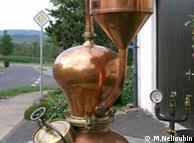 Bildunterschrift: 酒厂摩 塞尔-萨尔-鲁威尔葡萄酒的三分之一供出口。最重要的出口对象国是英国、美国、日本、荷兰和斯堪的纳维亚。在这个地区的葡萄酒庄园、地下室酒吧和绿荫酒 家,旅游者全年可以品尝和购买摩塞尔地区葡萄酒。除雷司令外,这里还有众多的葡萄和葡萄酒品种,如埃尔布玲(Elbling)、雷瓦娜 (Rivaner)、白色和灰色的布尔恭德(Burgunder)、奥谢罗斯(Auxerrois),沙尔多耐(Chardonnay)。苹果、梨、李 子、杏和柠檬的香味,草和花的香味,是雷司令的丰富特色。
Bildunterschrift: 酒厂摩 塞尔-萨尔-鲁威尔葡萄酒的三分之一供出口。最重要的出口对象国是英国、美国、日本、荷兰和斯堪的纳维亚。在这个地区的葡萄酒庄园、地下室酒吧和绿荫酒 家,旅游者全年可以品尝和购买摩塞尔地区葡萄酒。除雷司令外,这里还有众多的葡萄和葡萄酒品种,如埃尔布玲(Elbling)、雷瓦娜 (Rivaner)、白色和灰色的布尔恭德(Burgunder)、奥谢罗斯(Auxerrois),沙尔多耐(Chardonnay)。苹果、梨、李 子、杏和柠檬的香味,草和花的香味,是雷司令的丰富特色。
诱人的旅游环境
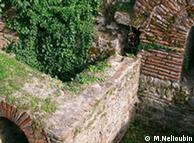 Bildunterschrift: 摩塞尔河畔的特里尔城
Bildunterschrift: 摩塞尔河畔的特里尔城
自行车路线、坐船的路线,或者长途漫走穿越葡萄山,然后走进一个葡萄酒庄园,这里有着诱人的丰富的可供选择的旅游可能性和地点。此外,摩塞尔-萨尔-鲁威尔葡萄酒协会还提供各种葡萄与葡萄酒研讨会。2008年3月28日至4月28日之间,这个地区将举办一个葡萄酒美食节。
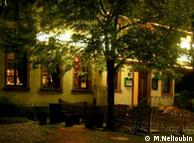 Bildunterschrift: 酒地Wintrich
Bildunterschrift: 酒地Wintrich
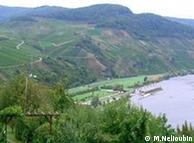 Bildunterschrift: Wintrich
Bildunterschrift: Wintrich
德国之声版权所有
转载或引用请标明出处和作者
责任编辑:德国之声中文网

CASE STUDY Sonya Freeman and Raymond Jolicoeur, a Guru founder, loading samples of the energy drink into one of the company’s trademark electric minicars in Midtown Manhattan.
CRAIG MARGULIES is hoping to strike it rich in the grab-and-go beverage cases on the Upper East Side of Manhattan.

CONFAB In Montreal, from left, the Guru partners Joseph Zakher, Eric Graveline, Raymond Jolicoeur, François Bazinet and Eric Tomeo.
A 36-year-old with a master’s degree in industrial psychology, Mr. Margulies left a corporate career to become a sales representative for Guru energy drinks, a new company started by a bunch of old Canadian high school pals.
It might seem like a strange career switch, until you consider that the investors in the last beverage sensation in Manhattan — Glacéau, the makers of Vitaminwater — split $4.1 billion last year after Coca-Cola bought it.
“Bust my hump and get some equity in the company,” Mr. Margulies explained. “That’s what we are all here for.”
Guru, which is already selling in Canada, is trying to crack the New York market by zipping around the city in electric minicars painted like Guru cans and hiring cheerful, attractive young women to offer samples at convenience stores, health clubs, supermarkets and delis.
But most of all, it is relying on the skills of salesmen like Mr. Margulies, who in three months on the job has received a quick education on how to win coveted shelf space in beverage cases around the city. It requires a gift for schmoozing, a comfortable pair of shoes and armorlike skin.
The nonalcoholic beverage market, in New York City and elsewhere, is tough. For decades, it was dominated by the soft-drink giants Coke and Pepsi, with a few other brands scrambling for the leftovers. But the industry has radically changed in the last decade, as consumers have turned away from soft drinks amid concerns about their impact on health. Since 1998, Americans have been drinking about 33 fewer cans of soda per person per year, according to Beverage Digest, a trade magazine.
An enormous variety of drinks, a hundred or more even in small delis, have picked up the slack. Bottled water and Gatorade are big sellers, but there’s also a rainbow of teas, flavored waters, sparkling waters, carbonated juices and yogurt smoothies. And energy drinks, where Guru believes it has found an opening offering products with all natural and organic ingredients.
The explosion of new beverages has been marked by stories of regular folks who started small and made it big with a new drink that they hustled to local stores. Three New York friends created Snapple, which was sold to Quaker Oats Company in 1994 for $1.7 billion. Arizona tea was mixed up by a couple of Brooklynites who first tried flavored seltzer and malt liquor.
Glacéau’s Vitaminwater was the brainchild of J. Darius Bikoff, who insisted on selling his vitamin-spiked flavored water beside regular bottled water rather than in the soda section.
The four founders of Guru Beverage have a pretty good story, too. But the ending remains far from certain. While creating a drink in a blender and finding a bottler is relatively easy and inexpensive, making it a successful brand is difficult.
“Frankly, some of it is luck,” said Gary Hemphill, managing director of the Beverage Marketing Corporation. “Being at the right place with the right product at the right time.”
Guru’s founders met in high school in Montreal, at Collège Jean-de-Brébeuf, and became close as their paths crossed again in later years. Eric Graveline became an investment banker and moved to New York, where he roomed with François Bazinet, a fashion model.
When Mr. Bazinet moved back to Montreal, he and Joseph Zakher opened several nightclubs. Raymond Jolicoeur worked in Canada for several food and beverage companies, including Kraft and Allied Domecq, now part of Pernod Ricard. (A fifth partner, Eric Tomeo, joined later.)
In the late 1990s, Mr. Bazinet noticed energy drinks for sale in his travels in Europe and Japan and suggested to Mr. Jolicoeur that they introduce one in Canada.
They began experimenting with drinks in Mr. Jolicoeur’s Montreal apartment, mixing in botanical ingredients, like ginseng and guarana, that Mr. Bazinet had discovered during his travels. The inspiration for the name came from an article on Bill Gates, which described him as “the guru of technology.”
“It was like, wow, you know, this should be the guru of all drinks, as strong as we can make it, as healthy as we can make it,” Mr. Bazinet said.
Bankrolled by the founders’ savings accounts, the company sold its first can of Guru at a small deli in Montreal in 2000. By the end of the first year of production, nearly one million cans had been sold, mostly in Montreal.
By 2005, Guru was being sold throughout Canada, and the company was looking to sell in the United States. New York City was selected because it was the largest market, it was fairly similar to Montreal in terms of its many independent retailers, and Mr. Graveline was living there and preparing to retire from Wall Street.
“If it doesn’t make it there, we would rather know up front rather than later,” Mr. Jolicoeur said. “But if it does make it there, we would feel like we can make it in other cities, not just in America but elsewhere.” He said it was important for the company to prove to itself “that the Guru concept has legs.”
Guru set up an office in the foyer of a two-bedroom apartment on Wall Street that doubles as Mr. Jolicoeur’s residence and a crash pad for the other partners when they visit from Montreal. Mr. Jolicoeur shares the apartment with a cat named Chloe.
“It’s the good-luck cat,” he said, explaining that he found Chloe abandoned on a highway around the time Guru was being introduced in Canada.
The company’s strategy in New York was similar to what worked in Montreal: trying to get the product into as many retail locations and company cafeterias as possible in a small area to create buzz, and then expanding.
That kind of small-scale approach works to a point. But eventually you need to have a good distributor.
In New York, apart from the soda companies, much of that business is controlled by one company, Big Geyser, a Queens operation that has been crucial to the New York success of Vitaminwater and of Honest Teas, a company founded in 1998 by Seth Goldman with a business professor at Yale University. This month, Coca-Cola bought a 40 percent stake in the company for about $43 million.
When he started, Mr. Goldman was driving cases of his tea around in a van, trying to persuade retail stores to try it. He realized that to gain any scale he needed a distributor who had a fleet of trucks and well-known relationships with retailers.
“You go into a store, and you’re asking a guy to take a brand on,” Mr. Goldman said. “Who are you? How are you going to get in there?” But if you are connected with an established distributor, he said, the relationship is already reputable. “It’s where they say, ‘Here’s my friend Seth.’ ”
Guru chose Exclusive Beverage as its distributor, hoping Guru would receive more attention with a smaller company than it would have with Big Geyser. Besides, Big Geyser was the distributor for Vitaminenergy, Glacéau’s energy drink product and a competitor.
Steve Gress, Exclusive’s president, said his portfolio consisted of small start-ups like Guru. Asked what makes a hit, he said, “I wish I knew because I’d be a lot better off.”
Mr. Gress credited Guru as being “very hands-on” and willing to listen to advice on how to succeed in New York. “You need the company support,” he said. “You need to get it in people’s hands and get them to try it.”
The company started selling its drinks downtown last July. It has advertised in The Village Voice and Time Out New York, sponsored art and fashion shows, and scooted around the city in its electric cars to promote the idea that the car and Guru offer “clean energy.” An 8-ounce can of Guru sells for $2.29 to $2.49, and a 16-ounce can fetches $2.79 to $3.50.
On a recent Friday just before noon, the Guru cars pulled up to the Dean & DeLuca store in SoHo to offer samples. At the store’s direction, the Guru team set up a table near the fish counter, not ideal, and an off-duty actress, Jesse Barton, offered plastic cups of Guru.
The reviews were mixed.
“It kind of tastes like if you can imagine orange soda but without the bubbles, without too much carbonation,” said Ian Yellowday. “It’s really good.”
Jeff Negrin, another sampler, said that Guru tasted better than other energy drinks, which he doesn’t like. And he also liked that it wasn’t carbonated.
But his friend David Kessler questioned whether Guru was distinctive enough to rise above the growing pack of beverage choices. “We’re marketing guys,” Mr. Kessler explained. “I don’t know if it’s differentiated enough to get my attention to say it’s really unique and I’ve got to have it.”
Mr. Kessler’s comments crystallize the challenge for Guru’s salesmen, who must convince the managers of company cafeterias and health clubs, vitamin stores and bodegas that they must have Guru on their shelves. “There are so many drinks out there,” Mr. Margulies said. “The only niche we have to play off is that it’s an all-natural product.”
Yet Mr. Margulies exhibits considerable skill as a salesman. In a morning of sales pitches, he praises Guru’s natural ingredients, taste, can design and Guru name, which he says particularly resonates with people of Indian descent. “The product is the product, but if you don’t sell yourself it makes no difference,” said Mr. Margulies, a Long Island native who is newly married. “You’ve got to make an impression in the first five minutes or you are done.”
Mr. Margulies tried to do just that with James Kong, the harried owner of the New Market Place deli on East 70th Street in Manhattan. Mr. Kong said he was inundated with sales pitches for new beverages and appeared to be in no mood for Mr. Margulies’s spiel.
But Mr. Margulies persisted. He offered Mr. Kong a free case of Guru if he bought two, and promised to bring him a sample in a day or two. (Mr. Margulies, who walks his daily route and carries two cans for display, generally sends out samples during deliveries.)
Mr. Kong said he would buy only one case and wanted the free one, too. He also wanted a taste from one of the two cans that Mr. Margulies carries.
“Well, if it’s going to get me a sale, crack it open,” Mr. Margulies said.
“I prefer Red Bull,” Mr. Kong said after a sip. “But this is not that bad.”
STOCKHOLM (Reuters) - Sweden's centre-right government has chosen four bidders in its auction of Vin & Sprit that will be allowed to perform due diligence of the Absolut vodka maker, business daily Dagens Industri reported on Sunday.
The four selected bidders -- Fortune Brands Inc
The newspaper, which did not disclose its sources, said the four bidders would proceed to more closely scrutinize Vin & Sprit in a due diligence process before finalizing their offers.
Vin & Sprit is to be sold as part of Sweden's biggest-ever privatization, which also includes stakes in telecom operator TeliaSonera AB
The government this week sold its entire holding of just under 7 percent of shares in bourse operator OMX AB
(Reporting by Niklas Pollard; editing by Jeffrey Benkoe)
The quality of a bar in São Paulo is measured in large part by its chopp (SHO-pee), the Brazilian-style draft beer. And the pouring process is as much an art for Brazilians as Guinness-pouring is to the Irish. The undisputed chopp masters can be found at Bar Léo (Rua Aurora, 100; 55-11-3221-0247; www.barleo.com.br), a German-themed joint in the city's gritty center.
To test the barman's skills, ask for a leitinho (lay-CHEEN-yo), all head and no beer. It may sound crazy to the foam-phobic American beer guzzler, but the all-head beer is so creamy, you may just become a convert.
HEAD(ビールの)あわ; (牛乳の表面の)クリーム
The froth or foam that rises to the top in pouring an effervescent liquid, such as beer.2008.02.20
朝日啤酒和丸紅計劃在中國產銷葡萄酒